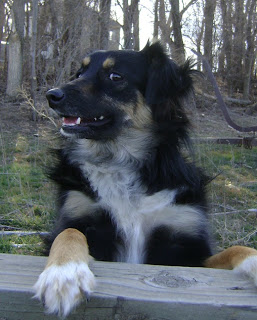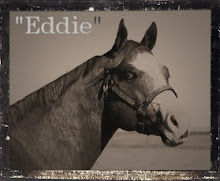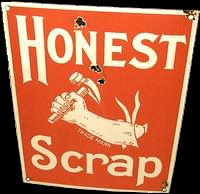As I mentioned in my previous post, I moved all of my horse supplies out of the old barn and over to the tackroom in my new-ish little horse building. One of these days I will have a real horse barn with a real tack room with a real medical station (complete with mini-fridge, etc), but until I win the lottery or a few years of gainful employment pass, this will have to do.
Actually, it does quite well! I was very happy with how it all turned out. The area is small, but thankfully I was able to pre-plan enough for the project to come together in quite an organized fashion. However, I wondered, as I unloaded all my supplies, moved everything, and then put everything away again, if I had fully stocked my equine medical cabinet.
I searched the internet for a list of some sort but found none. There are first-aid kit lists (which are good, but not necessarily complete enough for me) and then things like vaccination, worming, or horse-show lists, but again, not what I was looking for. I want a list that tells me what an average person should have on-hand at all times. Thankfully my vet is good about asking me, "Do you keep this on hand?" and if not, he gets it to me since he knows I live an hour away and it's easier for him to give me instructions over the phone than bring the horse in, if at all possible. I've also been lucky enough to have experienced working on a large horse farm and I learned a lot there about how to use some products and what to keep on hand, but as always, I am sure there are ways I can improve.
So here's the deal: I will share what I have and what else I think I need. In exchange, PLEASE leave me your own tips and thoughts in the comments, or email them to me if you don't feel comfortable enough (or can't get a comment to post) at rosevalleyranch@yahoo.com. I will do a follow-up post and try to combine everyone's suggestions into a "master list" that hopefully can be added to for a long time to come. This way, we'll learn from each other and hopefully all be prepared should any minor events to emergencies arise.
First things first, I am always sure to have at least TWO vets' phone numbers in my phone at all times. I try to at least buy some meds, or take an animal in for something minor (Coggins tests are a good task for non-primary vets) to a second vet just in case an emergency arises and my main vet is out of town or not available. It's imperative to sustain a relationship with more than one veterinary professional, so although I may prefer the work of one, I am sure to do business with more than one because you just never know.... I also have the phone numbers of at least two experienced horse people in my phone, just in case the vets fall though, I know I can call on these people for a little help or suggestions until I can reach a vet. I have fallen back on these friends more than once, especially on a Sunday, when mare foals and retains her placenta and of course I didn't have any oxytocin on hand, but my friend sure did!
Since I don't have electricity out to my little barn yet (and even if I did, I really don't have the extra room), I don't have a mini-fridge out there, so I keep my penicillin in my fridge in the house. Aside from that, I keep everything else out in the tack room.
First, I have a little medical kit (aka, toolbox). Unfortunately, dastardly little heathen mice chewed a hole in the top of it, but once they found out there wasn't anything to eat in it they've left it alone. One day I'll get a replacement but it's still working fine for now. In the bottom of it I keep all my syringes. I try to keep a wide variety on hand: 6cc, 12cc, 20cc and 60cc (not pictured here). By the way, a "mL" is the same thing as a "cc." If I had a horse positive for HYPP I would keep one 60cc syringe on hand with the top cut off to enlarge the opening to make it easier to administer karo syrup as well as a 20cc syringe with the top dug out to enable soaked acetazolamide pills to be administered as well. But, all my current horses are negative, so I don't have to keep those things on hand. If you do need these things, it's easier to keep one syringe for each and wash it really well after each use.

I also keep vet wrap on hand. I have two rolls but really need a couple more here.
I keep banamine on hand at all times as well. NOTE: NEVER administer banamine intramuscular! If you can't hit a vein just administer it orally. It will take longer to work but it's better than
the alternative.
In the top portion I keep a tube of bute, a thermometer, terramycin (eye ointment), and any extra injections the vet gives me or that I have pulled and didn't end up using (be sure to label what it is and the date!). In this case the vet gave me a new drug--I can't remember the name--that is supposed to cease cramping in colic cases more quickly than even banamine, just in case Bambi started having colic problems again so she'd make the hour trailer ride to the clinic. Thankfully I haven't had to use it!
Speaking of thermometers, this is the number-one piece of veterinary equipment that I have. I use it more than anything else. If I call my vet with an issue, one of his first questions is always "what is his/her temperature?" It's helpful if I have this info before I even make the call. I also used it a lot during our strangles epidemic almost three years ago now--I constantly monitored the horses to make sure their fevers didn't get dangerously high. A thermometer is a must!
I bought this toolbox not only because it was on clearance, but because it had this handy top section that I knew would be perfect for organizing needles! Right now I have only 20 gauge, which is what I use to administer banamine with, but I really need some 18 gauge (which is bigger than 20--the smaller the number, the bigger the circumference of the needle) for penicillin. It's on my shopping list, along with hopefully several more items after I get all your suggestions!
I keep the rest of my equine medical supplies in an old freezer, which is mice-proof. On top of the freezer I keep no-bow wraps in a plastic container (to keep them clean), another plastic container full of dixie cups and rubber nipples for the bottle in the fridge (foaling supplies), and then two large jugs--one filled with mineral oil and the other is full of keopectin (not keopectate, which now has asprin and is no longer safe for animals).
Inside the fridge I have polo wraps, clean, washed brushes, cotton wrap, sterile sponges in a plastic bag, saran wrap (for sweating an injury), tucoprim (another antibiotic), epsom salts, and a variety of wormers. In another plastic tub beside the freezer I have a bunch of clean shop towels that often really come in handy!
In the door of the freezer I have lube (for the thermometer), a Fleet enema (I need to buy a couple more of these before April for Bambi's foal), Wonder Dust, iodine, betadine scrub, and liquid DMSO (which freezes easily so I really should keep one of these in the house during the winter).
I also keep a box of disposable latex gloves at all times. Not only do I use these when I'm cleaning a wound, but also for sheath and udder cleaning (because you can NEVER get that smell off your hands), when handing ANY hormones at all, using DMSO (not only because it can carry anything on your skin INTO your skin, but also because it smells, at least to me, horrendous), but also when I'm painting or refinishing furniture, etc. I always know right where they are for any project at all this way!
I've got vetwrap with my wrap scissors in the door as well so it's near the wrapping supplies and products I'd apply with a wrap. The cooking spray is for when the horses' feet get snow-packed, I spray this on the bottom and it helps them clear the snow out of their feet better. There are a couple of bottles of MTG in there, some liniment, furazone, gel DMSO, A&D ointment, Swat ointment, liquid bluing (for shows), and showsheen (for shows again).
That's basically it for my medical "cabinet." I also wanted to share, though, sort of a neat trick I learned for having everything ready for banding at the shows. I can't remember exactly where I got this from, so my apologies for not giving credit where credit is due, but this is too good not to share. First, you start with a one of those step-stool tool boxes:
In the top, I have banding combs (which I hardly ever use, but they seem to multiply on their own without me ever having actually purchased one), a seam-ripper (to easily remove the bands out of the horse's mane when the show is done) and a comb that at first appears to be trashed, but is actually the only banding comb I use. See, when the second "tooth" is out, it makes for the perfect spacer for bands!
In the bottom of the toolbox I keep an apron (to hold supplies while I'm banding), banding mousse, bands, and then my show-finishing supplies: highlighter, cowboy magic, and finishing spray.
So that's it for this little corner of my tack room.
The other corners are just as packed, though. I did happen to find these very cool hangers at the local hardware store, that I found are perfect for halters and fly masks!
One problem I haven't quite found a solution for yet are how to store the gajillion blankets I have, though! The ones that hang up are fairly easy to store, but what about the ones with no hooks? I know I can fold them over a rod, but what if space is quite limited? Any suggestions?
I can't wait to hear more suggestions from everyone on what else I should have on hand and any other fun tips and tricks that we can all learn from each other. To me, this is part of what makes horse-owning so much fun. I hope this has been a somewhat helpful post and stay tuned for future postings that will hopefully include YOUR great suggestions!
Live'n and learn'n,
~J


.jpg)






























































